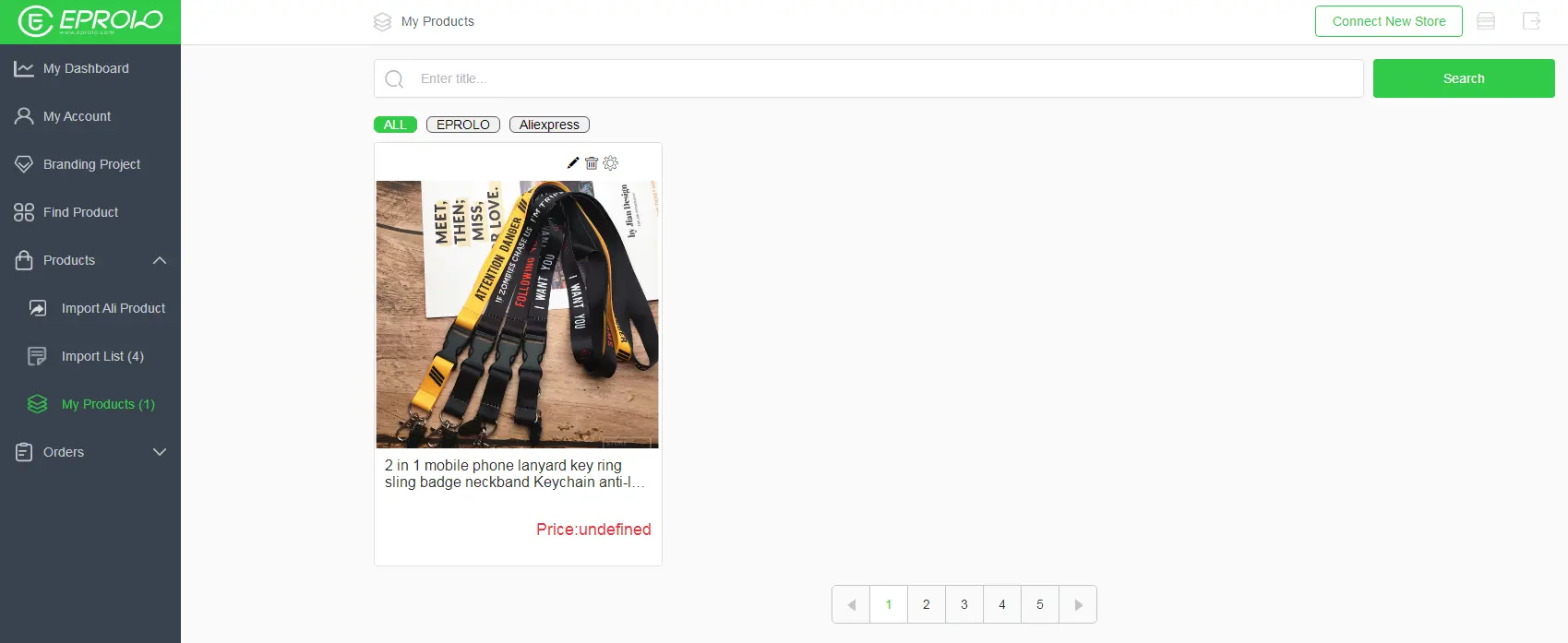Eprolo: Complete Buyer's Guide
AI-powered dropshipping platform
Eprolo positions itself as an AI-powered dropshipping platform that combines intelligent product sourcing with integrated fulfillment services, targeting small to medium-sized ecommerce businesses seeking operational efficiency through automation.
Market Position & Maturity
Market Standing
Eprolo operates within the rapidly expanding AI dropshipping market, positioned as a mid-tier solution combining automation capabilities with integrated fulfillment services. Limited market data suggests the platform holds a smaller market share among SMB-focused dropshipping tools compared to established players like Spocket [43][51].
Company Maturity
Operational scale across multiple geographic regions with fulfillment infrastructure spanning US, EU, and Asian markets [41][49].
Growth Trajectory
Documented customer success stories achieving significant revenue milestones, such as Home Hub's $1M monthly revenue and TTDEYE's $3M annual revenue [48][50].
Industry Recognition
The platform maintains positive ratings on major app stores, though specific metrics fluctuate frequently [46][47].
Longevity Assessment
The platform's integrated approach to branding and fulfillment provides clear differentiation for retailers prioritizing customer experience and operational efficiency.
Proof of Capabilities
Customer Evidence
Home Hub achieved $1M revenue within one month through Eprolo's dynamic pricing and automated supplier coordination [48]. TTDEYE built $3M annual revenue with 15-day average delivery times by leveraging Eprolo's FDA-certified suppliers and global warehousing infrastructure [50].
Quantified Outcomes
Home Hub's $1M monthly revenue and TTDEYE's $3M annual revenue [48][50].
Case Study Analysis
Home Hub's structured four-phase implementation spanning supplier testing, inventory synchronization, and marketing automation [48].
Market Validation
The platform maintains positive ratings on major app stores and demonstrates competitive advantages in specific niches, particularly visually oriented categories such as apparel and home goods [43][46][51].
AI Technology
AI-powered product discovery algorithms that analyze market trends through image-based and keyword-driven search capabilities [44][53].
Architecture
Order processing automation architecture automatically syncing orders across major ecommerce platforms, processing payments, and triggering fulfillment workflows without manual intervention [45][49].
Primary Competitors
AutoDS, Dropship.io, Spocket [43][51].
Competitive Advantages
Print-on-demand capabilities for over 1,500 products without minimum order quantities [45][49]. Multi-region fulfillment infrastructure spanning US, EU, and Asian markets [41][49].
Market Positioning
Eprolo targets the intersection of product discovery and fulfillment optimization, serving businesses seeking integrated solutions rather than point solutions [43][51].
Win/Loss Scenarios
Eprolo wins when businesses require integrated branding capabilities without minimum orders and multi-region fulfillment optimization [45][49]. Loses when businesses prioritize pure automation breadth (AutoDS advantage) or specialized trend analytics (Dropship.io advantage) [43][51].
Key Features

Pros & Cons
Use Cases
Integrations
Pricing
Featured In Articles
Comprehensive analysis of Dropshipping for Ecommerce for Ecommerce businesses and online retailers. Expert evaluation of features, pricing, and implementation.
How We Researched This Guide
About This Guide: This comprehensive analysis is based on extensive competitive intelligence and real-world implementation data from leading AI vendors. StayModern updates this guide quarterly to reflect market developments and vendor performance changes.
55+ verified sources per analysis including official documentation, customer reviews, analyst reports, and industry publications.
- • Vendor documentation & whitepapers
- • Customer testimonials & case studies
- • Third-party analyst assessments
- • Industry benchmarking reports
Standardized assessment framework across 8 key dimensions for objective comparison.
- • Technology capabilities & architecture
- • Market position & customer evidence
- • Implementation experience & support
- • Pricing value & competitive position
Research is refreshed every 90 days to capture market changes and new vendor capabilities.
- • New product releases & features
- • Market positioning changes
- • Customer feedback integration
- • Competitive landscape shifts
Every claim is source-linked with direct citations to original materials for verification.
- • Clickable citation links
- • Original source attribution
- • Date stamps for currency
- • Quality score validation
Analysis follows systematic research protocols with consistent evaluation frameworks.
- • Standardized assessment criteria
- • Multi-source verification process
- • Consistent evaluation methodology
- • Quality assurance protocols
Buyer-focused analysis with transparent methodology and factual accuracy commitment.
- • Objective comparative analysis
- • Transparent research methodology
- • Factual accuracy commitment
- • Continuous quality improvement
Quality Commitment: If you find any inaccuracies in our analysis on this page, please contact us at research@staymodern.ai. We're committed to maintaining the highest standards of research integrity and will investigate and correct any issues promptly.